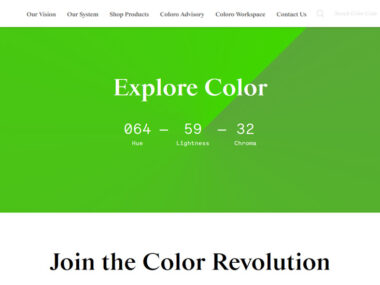Der freieFarbe e.V. hat sich zusammen mit mehreren Vereinsmitgliedern beim DIN Connect Wettbewerb beteiligt. Wir gehören zu den Gewinnern. Als Preisträger haben wir vom Deutschen Institut für Normung e.V. (DIN) einen Forschungs- und Entwicklungsvertrag über die Erstellung der DIN-Spezifikation (DIN SPEC) „Open Colour Communication“ erhalten. Das Projekt ist auf 1 Jahr in mehreren Teilschritten angelegt und wird vom DIN finanziell gefördert.
What is a DIN SPEC?
Die DIN SPEC ist gewissermaßen der kleine Bruder der DIN-Norm. Das DIN schreibt: „Die DIN SPEC ist ein hochwirksames Marketinginstrument, das dank der anerkannten Marke DIN für eine große Akzeptanz bei Kunden und Partnern sorgt. DIN sorgt dafür, dass die DIN SPEC nicht mit bestehenden Normen kollidiert, und veröffentlicht die Standards, auch international. Eine DIN SPEC kann die Basis für eine DIN-Norm sein.“ Näheres findet sich on the DIN website.
Why does this development make so much sense?
We want to show that with open tools and processes as well as Creative Commons licences, especially the CIELAB standard, ICC-based colour management and ISO standards for spectral data, colour communication on a professional level is possible.
Das Projekt wird vom DIN finanziell gefördert, wofür wir dankbar sind. Das weltweite Renommee des Deutschen Instituts für Normung, der Ansatz „Rationalisierung per Normung“, der Gemeinnützigkeitsstatus des DIN – all dies sind Gründe zur weiteren Freude. Die anschließende Veröffentlichung der Spezifikation durch das DIN ist die Chance, dass der Gedanke „freieFarbe“ weite Kreise zieht.
What happens first?
At the moment we are creating in cooperation with the association member Proof GmbH a colour atlas showing the free CIELAB colour space on 36 individual pages in high-end inkjet printing with 12 colours as well as an online version for approx. 2000 sample colour shades.
The colour space (gamut) shown includes not only the typical CMYK colours of offset printing but also special colours for various printing processes, inks and varnishes or plastics.
Spectral data for the HLC colour atlas
Another important step is the measurement and publication of 10nm spectral data of the colour samples published in the atlas. This will enable paint manufacturers to produce the colour shades in their production using formulation software. The spectral data will be made available to the public in the ISO standard CxF. The Creative Commons licence allows free use in both free and commercial software.
Vision for the future
Ultimately, it is conceivable (and the goal) that the free HLC colours can be freely varied and usefully supplemented by means of software that displays them exactly, and that the corresponding colour shades are immediately available by varnish, on textiles, as powder coating, foil, façade paint, etc. That every colour, including every intermediate colour, will be available online, in paint shops, DIY shops, etc.
Our standardisation via ICC colour management, CIE-HLC and spectral data should pave this way.
Update November 2018: Here you can download the meanwhile published Order DIN SPEC 16699 and download it free of charge.





2 comments
The RAL colour atlas has already been on the market worldwide for many years after CIELAB-LCH with applications in colourimetry, design, printing and layout.
What is the advantage of the new approach?
A sensible colourimetric connection to RGB colour values is important.
For this purpose, the Relative Elementary Colour System RECS consisting of:
- the analogue colour atlas RECS_a with real colour samples
(approx. 2000 standard offset colour samples in the CIELAB LCH system, also spectral, with RBG colour values)
- the RECS_d digital colour atlas in PDF and PS (PostScript) file formats.
Dear Professor Richter,
Thank you very much for your comment, which we would like to answer briefly:
The RAL design colours correspond only approximately to CIELAB-LCH. An arbitrarily chosen example: for RAL 70 50 30 a Lab of 48.64, 11.5, 29.59 is given (RAL software), but according to standard conversion for CIE-HLC 70 50 30 Lab = 50 10.2 28.19 would be correct. It is a deviation of DeltaE76= 2,31 (!), thus a clear difference. The areas of application of the RAL system mentioned by you also only exist in part, RAL printing inks are not known to us, for example.
Another difference and even greater advantage of our atlas is its free usability. We do not prevent duplication, but wish to see it distributed as freely and free of charge as possible. The underlying model can be computed by anyone, the atlas can be freely calculated, e.g. internally for intermediate colours, gradations and counter colours as well as externally for colour system comparisons and RGB/CMYK colour values. Thirdly, we also publish spectral data of all colours, with which all colour tones can be recalculated. No other system offers these advantages.
The colourimetric connection to RGB we have carried out via the standard conversion and ICC profiles, which is built into numerous softwares. Currently, we prefer sRGB because of its high prevalence, but any other RGB can be calculated as well.
We are convinced that the concept will automatically open up many areas of application due to its advantages.
Thank you for pointing out the Relative Elementary Colour System RECS. We were not aware of this until now. Unfortunately, we cannot find the colour atlas RECS_a and RECS_d mentioned by you, please let us know a link. We would be happy to add this system to our list of links.
We welcome suggestions of all kinds, including criticism!
Many greetings, your freieFarbe team
Holger Everding
Comments are closed.